Gwaneumsa Temple on
Jeju Island
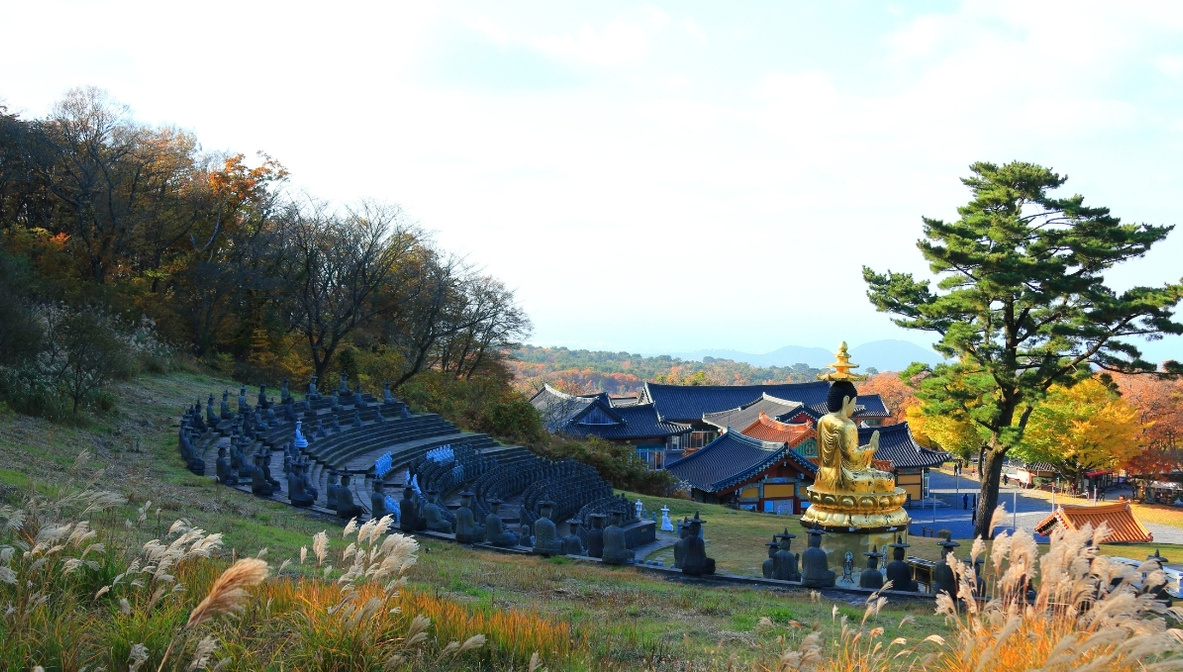 Gwaneumsa Temple on Jeju Island - background
Gwaneumsa Temple on Jeju Island - backgroundGwaneumsa Temple on Jeju Island
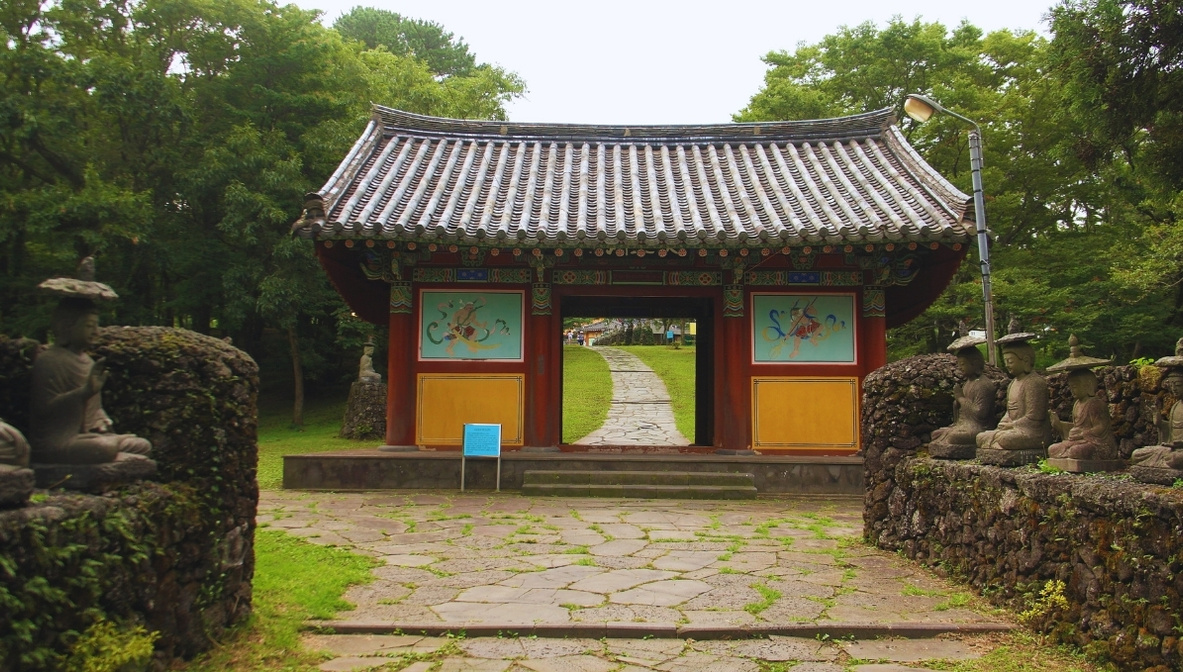 'Sacheonwangmun' (Four Heavenly Kings) Gate at Gwaneumsa Temple on Jeju Island
'Sacheonwangmun' (Four Heavenly Kings) Gate at Gwaneumsa Temple on Jeju IslandGwaneumsa Temple on Jeju Island, South Korea, is one of the most revered Buddhist temples in the region. Its history dates back over a thousand years.
The temple's history is intertwined with the storied past of Jeju Island, which has a unique culture, geography, and ecology that have shaped the temple's character and influence.
Gwaneumsa Temple on Jeju Island, nestled in the foothills of Hallasan Mountain, is known for its serene and awe-inspiring surroundings.
The temple's location and architecture reflect a deep appreciation for nature and its spiritual significance in Buddhist beliefs.
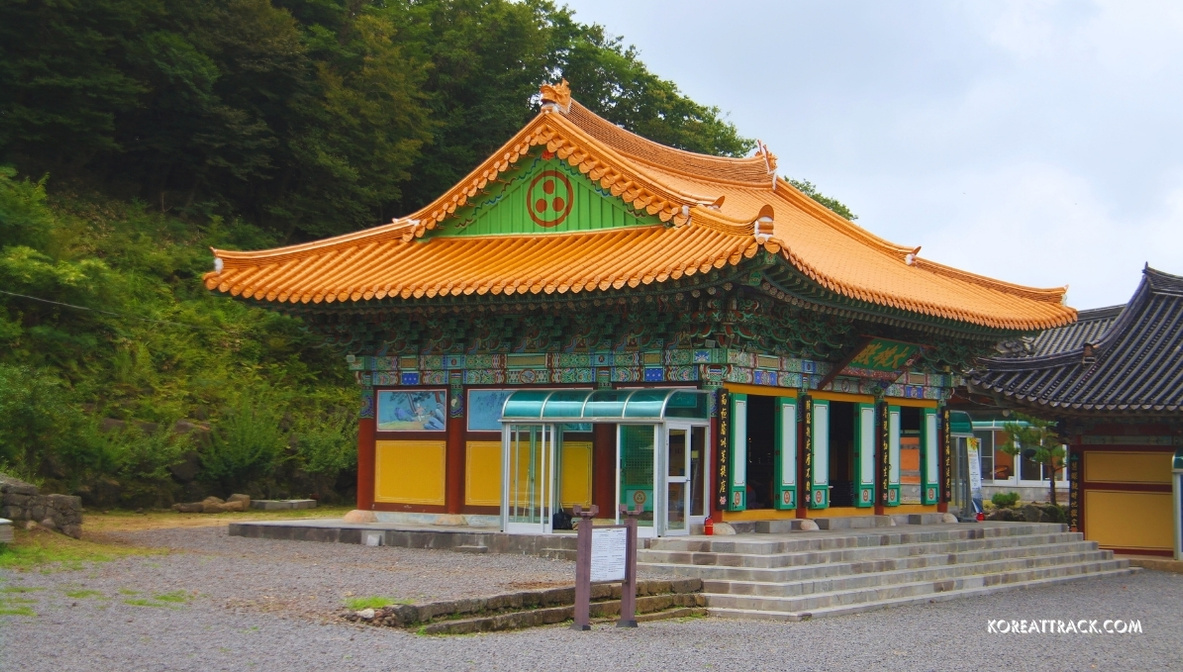 Gwaneumsa Temple on Jeju Island
Gwaneumsa Temple on Jeju IslandVisitors to Gwaneumsa Temple can explore the various facilities, including the main hall, the bell tower, the drum tower, the meditation hall, and the shrine dedicated to the Buddha of Medicine.
The temple also offers cultural programs, such as traditional tea ceremonies and Buddhist meditation classes, that allow visitors to experience the local customs and practices firsthand.
In addition to its spiritual significance, Gwaneumsa Temple is a popular travel attraction for Jeju Island tourists.
The temple's scenic location, tranquil atmosphere, and rich cultural heritage make it an ideal destination for those seeking to immerse themselves in Korean history and spirituality.
Historical Background
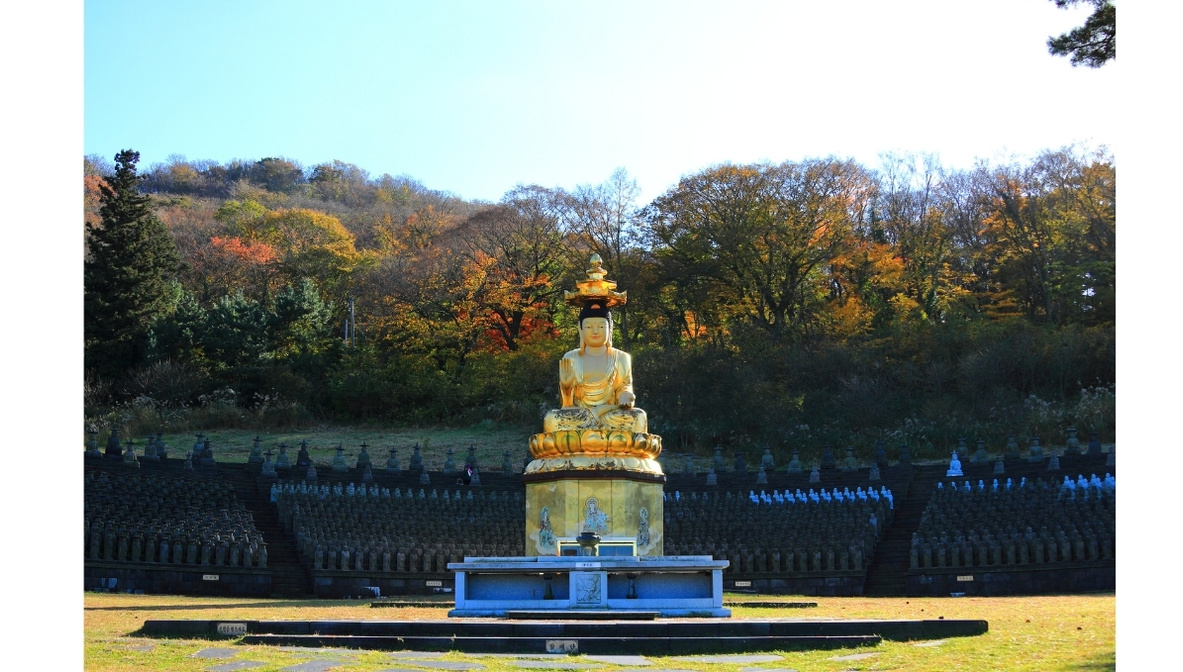 Gwaneumsa Temple on Jeju Island - Golden Statue of Bodhisattva of Compassion, Gwanseeum-bosal
Gwaneumsa Temple on Jeju Island - Golden Statue of Bodhisattva of Compassion, Gwanseeum-bosalGwaneumsa Temple is a historic temple on Jeju Island, South Korea, founded initially during the Goryeo Dynasty (918-1392 AD).
It is dedicated to Gwanseeum-bosal, the Bodhisattva of Compassion, and serves as a center for Buddhist practice, meditation, and cultural activities on the island.
Gwaneumsa Temple has gone through several turning points throughout its history, including...
The temple was severely damaged and neglected During the Japanese colonial period (1910-1945).
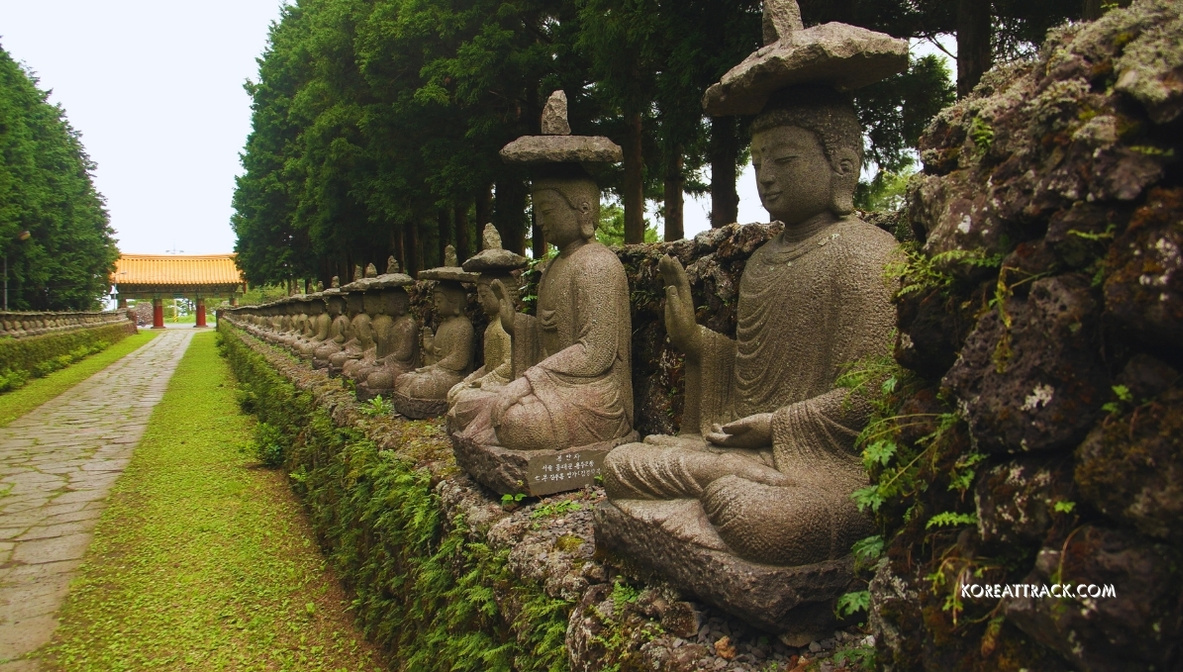 Gwaneumsa Temple on Jeju Island - Stone Statues of Bodhisattva of Compassion, Gwanseeum-bosal
Gwaneumsa Temple on Jeju Island - Stone Statues of Bodhisattva of Compassion, Gwanseeum-bosalIn the 1970s, a restoration project was initiated to rebuild the temple and preserve its cultural heritage.
Gwaneumsa Temple was designated a National Treasure of South Korea, recognizing its historical and cultural significance in 1999.
In 2007, a new meditation center was established at the temple, providing a peaceful and serene environment for visitors to practice meditation and mindfulness.
In 2018, the temple underwent a major renovation, including restoring the main hall and other important structures. This ensures the temple remains a vital center for Buddhist practice and cultural activities on Jeju Island.
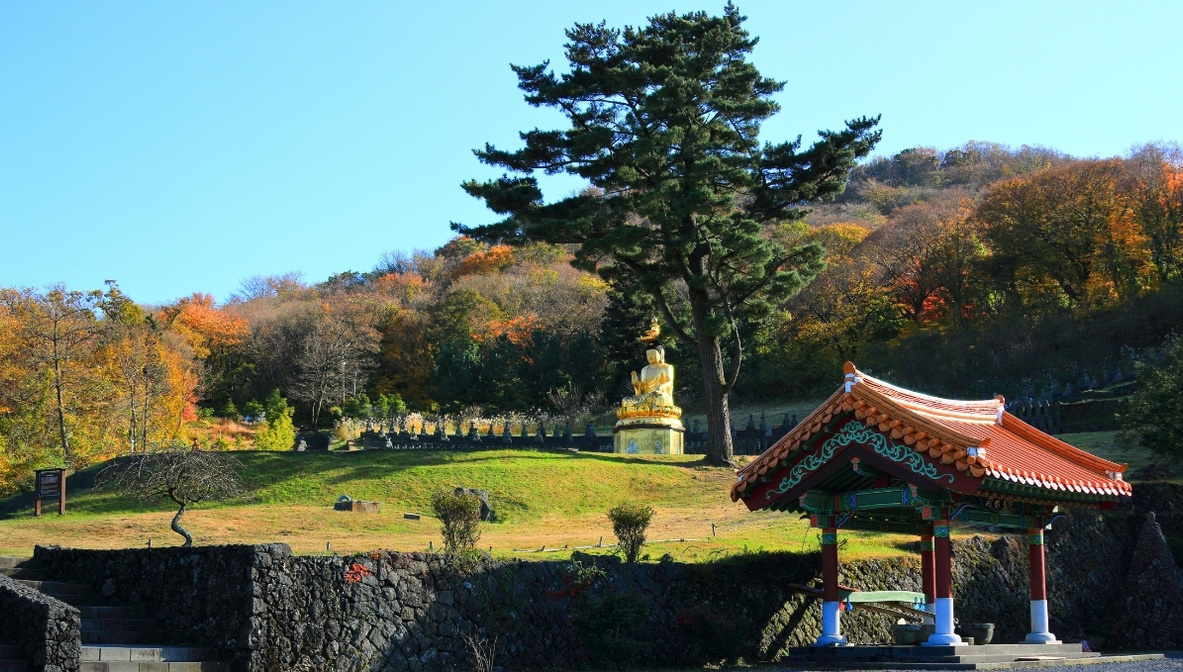 Gwaneumsa Temple on Jeju Island (Gwaneeum-bosal, spring water)
Gwaneumsa Temple on Jeju Island (Gwaneeum-bosal, spring water)The Main Hall (Daeungjeon) is the central hall of Gwaneumsa Temple, where ceremonies, rituals, and daily prayers are conducted.
The hall typically houses statues of Buddha, Gwanseeum-bosal, and other important Buddhist figures. These statues are considered significant works of art and are revered by practitioners and visitors alike.
Another exciting feature of Gwaneumsa Temple is the traditional three-story stone pagoda. This pagoda symbolizes the temple's heritage and architectural style and is a focal point for visitors and practitioners.
It is a great place to take photographs and appreciate the craftsmanship of the temple's builders.
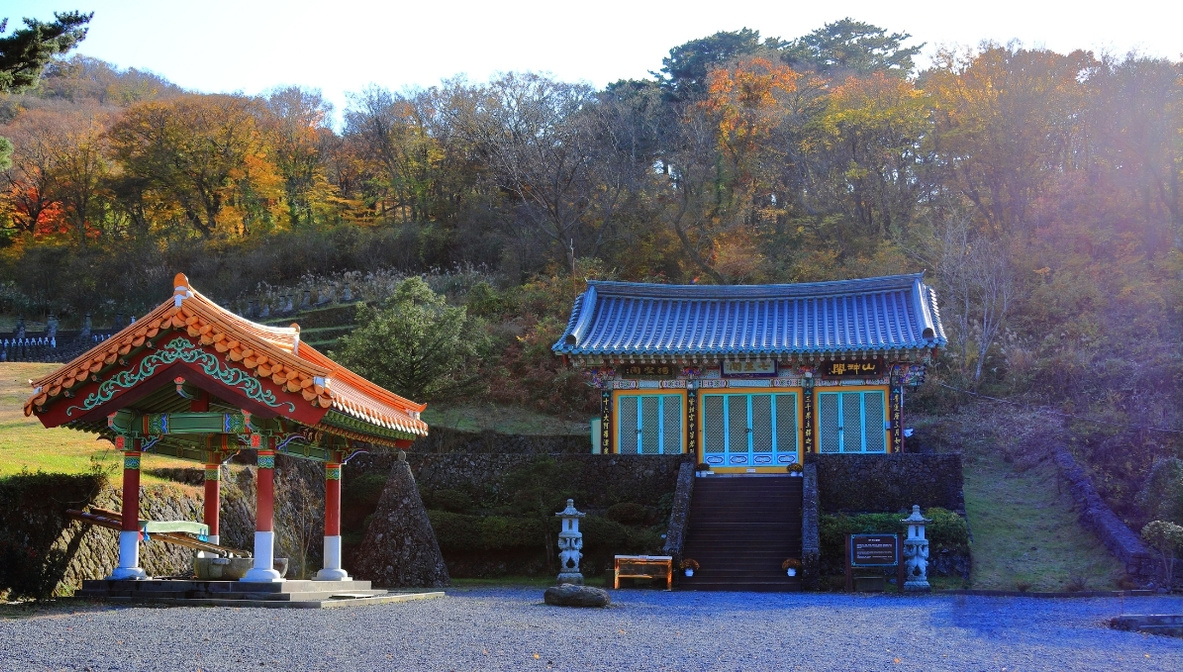 Gwaneumsa Temple on Jeju Island - Chilseonggak (Seven Stars Hall)
Gwaneumsa Temple on Jeju Island - Chilseonggak (Seven Stars Hall)The Bell Pavilion and Drum Tower are two structures that house the temple's ceremonial bell and drum. The bell and drum mark time and call practitioners to prayer. Visitors can listen to the bell and drum played during ceremonies, which is a unique and memorable experience.
Serene gardens, walking paths, and meditation areas also surround Gwaneumsa Temple. These provide a peaceful environment for contemplation and relaxation. Practitioners and guests can enjoy Jeju Island's natural beauty while meditating or taking a stroll.
Gwaneumsa Temple is a beautiful and historically significant temple worth visiting. It offers a unique glimpse into Korea's rich cultural heritage and provides a serene and peaceful environment for meditation and contemplation.
Artifacts & Records
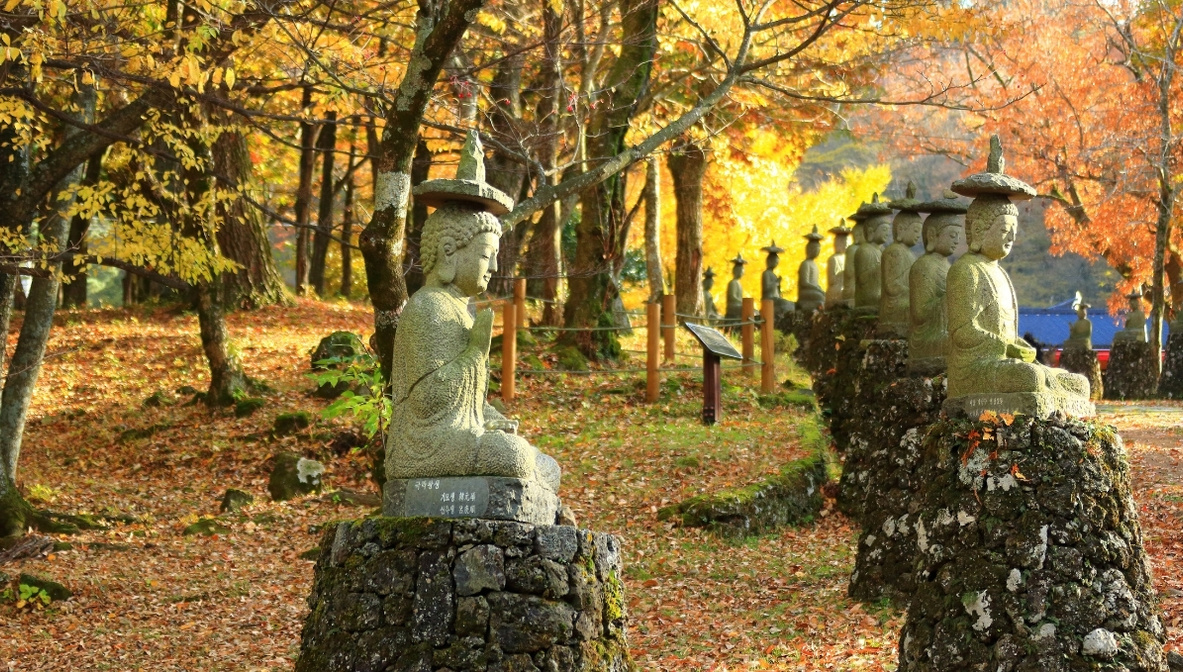 Gwaneumsa Temple on Jeju Island - Bodhisattva of Compassion stone statues
Gwaneumsa Temple on Jeju Island - Bodhisattva of Compassion stone statuesThe temple was built in the early 10th century and has undergone several reconstructions. The temple is known for its beautiful scenery, serene atmosphere, and cultural significance.
The relics and artifacts in Gwaneumsa Temple are a testament to its rich history. The ancient statues in the temple include a giant statue of Buddha and other smaller statues of Buddhist deities.
These statues are made of various materials, such as bronze, wood, and stone, and are decorated with intricate details.
The stone carvings in the temple are also noteworthy. They depict various scenes from Buddhist mythology and offer a glimpse into the religious beliefs of the people who built the temple.
The carvings are made on large rocks and are spread throughout the temple grounds.
The Buddhist scriptures in Gwaneumsa Temple are written on traditional Korean paper called "hanji." Buddhist followers consider them holy and use them for prayer and meditation.
The scriptures are kept in a special room in the temple and are only accessible to the monks who live there.
In short, the relics and artifacts found in Gwaneumsa Temple are a significant part of Korean culture and history. They offer a window into the past and provide valuable insight into the religious beliefs and practices of the people who built and maintained the temple.
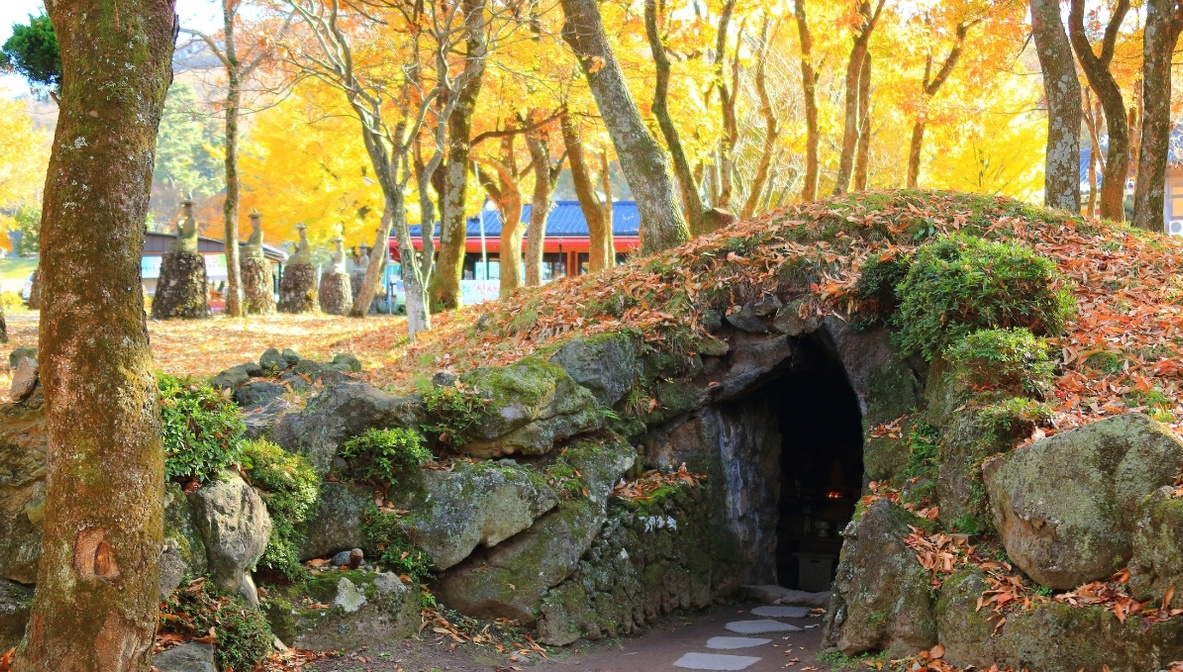 Gwaneumsa Temple on Jeju Island (cave)
Gwaneumsa Temple on Jeju Island (cave)Great Facilities & Access
Temple Stays: Gwaneumsa Temple offers programs for visitors to experience the life of a Buddhist monk through temple stays, which include meditation sessions, chanting ceremonies, and communal meals.
Meditation Centers: The temple provides meditation instruction and practice sessions for beginners and experienced practitioners.
Cultural Programs: Gwaneumsa Temple hosts various cultural events, workshops, and lectures throughout the year, providing you or other visitors with opportunities to learn about Korean Buddhism, meditation, and traditional practices.
Travel Attractions
Natural Scenery
Gwaneumsa Temple is situated amidst the picturesque landscapes of Jeju Island, offering stunning views of mountains, forests, and coastline.
You can enjoy hiking trails, waterfalls, and scenic overlooks in the surrounding area.
Jeju Olle Trails
Gwaneumsa Temple is located near several segments of the Jeju Olle Trails, a network of walking paths that traverse the island's coastline and countryside.
You may explore these trails and experience Jeju Island's natural beauty and cultural heritage.
Nearby Attractions
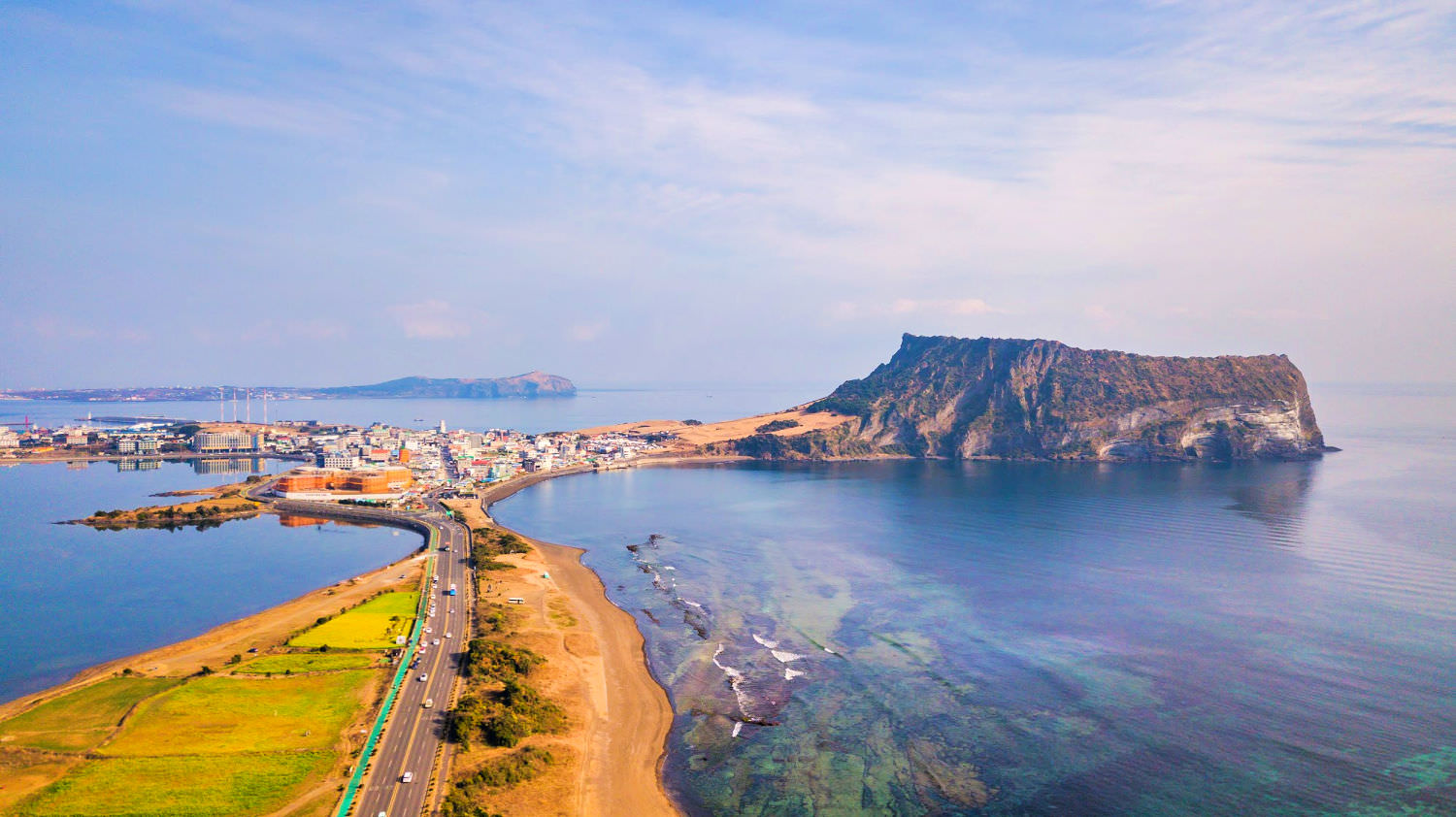 Jeju Island - Ilchulbong (Sunrise Mountain)
Jeju Island - Ilchulbong (Sunrise Mountain)Gwaneumsa Temple is close to other popular attractions on Jeju Island, including Seongsan Ilchulbong Peak, Hallasan National Park, and Seopjikoji, making it a convenient stop for travelers exploring the island.
Seongsan Ilchulbong Peak is a volcanic peak on Jeju Island's eastern coast. It is one of the island's most popular tourist attractions, known for its breathtaking views of the sunrise and the surrounding ocean.
People can hike to the top of the peak and enjoy the panoramic views of the island's rugged coastline.
Hallasan National Park is a beautiful nature reserve located in the central part of Jeju Island. It is home to Hallasan, the highest mountain in South Korea, and a wide variety of flora and fauna.
Travelers can hike through the park's lush forests, admire the stunning waterfalls, and enjoy the panoramic views of the island.
Seopjikoji is a beautiful coastal area on the eastern tip of Jeju Island. It is known for its stunning natural scenery, including rocky cliffs, white sandy beaches, and crystal clear waters.
You can stroll along the coastal trail and admire the breathtaking views of the surrounding landscape.
Temple Area Accessibility
By Public Transportation: Gwaneumsa Temple is accessible by bus from various parts of Jeju Island. Travelers can take a bus to the nearest bus stop and walk or take a taxi to the temple entrance.
Getting to Gwaneumsa Temple on Jeju Island
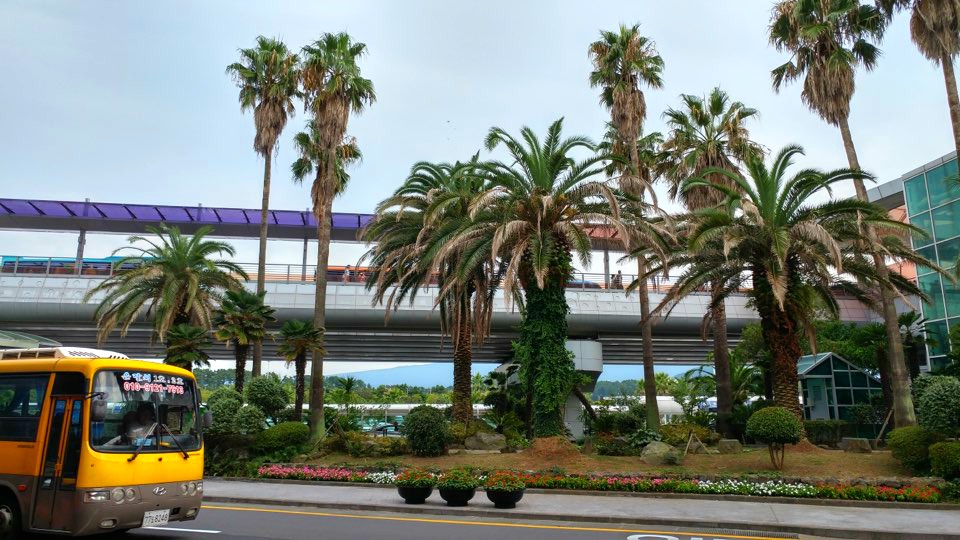 Outside view of Jeju Airport
Outside view of Jeju AirportTo get to Gwaneumsa Temple from Seoul, you typically have two options: by air or sea. Here's a breakdown of each method...
By Air
Flight to Jeju International Airport (CJU):
You can fly from Seoul (Incheon International Airport or Gimpo International Airport) to Jeju International Airport (Jeju Island).
Several airlines operate flights between Seoul and Jeju, offering multiple daily departures. The flight duration is approximately one hour.
Once you arrive at Jeju International Airport, you can proceed to the airport's transportation hub to access various transportation options to Gwaneumsa Temple.
Transportation from Jeju International Airport to Gwaneumsa Temple:
From Jeju International Airport, you can take a taxi, rent a car, or use public transit to Gwaneumsa Temple.
Taxis are readily available outside the airport terminal and provide a convenient option for direct transportation to the temple.
Public buses also operate from Jeju International Airport to various locations on Jeju Island, including areas near Gwaneumsa Temple. You can inquire about bus routes and schedules at the airport's transportation information desk.
By Sea
Ferry from Incheon Port to Jeju Port:
You can take a ferry from Incheon Port near Seoul to Jeju Port on Jeju Island. Several ferry companies offer services between Incheon and Jeju, with varying schedules and travel times.
Ferry travel duration is approximately 12-14 hours, depending on the ferry route and sea conditions.
Once you arrive at Jeju Port, you can take a taxi, rental car, or public transportation to Gwaneumsa Temple.
Transportation from Jeju Port to Gwaneumsa Temple:
Similar to arriving by air, you can use taxis, rental cars, or public transit to travel from Jeju Port to Gwaneumsa Temple.
Taxis are available at the port's taxi stand, providing a convenient option for direct transportation to the temple.
Public buses operate from Jeju Port to various destinations on Jeju Island, and you can inquire about bus routes and schedules at the port's transportation information desk.
Useful Notes
Please check the schedules and availability of flights or ferries in advance, especially during peak travel seasons or holidays.
Visitors to Gwaneumsa Temple are encouraged to check the temple's website or contact them directly for information on visiting hours, temple stay programs, and special events.
Respectful attire and behavior are recommended when visiting Buddhist temples in South Korea. This includes covering shoulders and knees, removing shoes before entering temple buildings, and refraining from loud noises or behavior.
- Home
- Temples in South Korea
- Gwaneumsa Temple On Jeju Island
Get Exciting Activities
Book one of our exciting activities today to experience the thrill of a lifetime! Take advantage of this opportunity and secure your spot in advance.
Hotel Map Guide
Find your affordable, accessible, and comfortable hotel in Seoul at Agoda.Com. See the hotel map below...
Hotel Booking Guide
Find affordable and amazing hotels on Agoda.com using the search box below. Book now to enjoy great discounts and save!
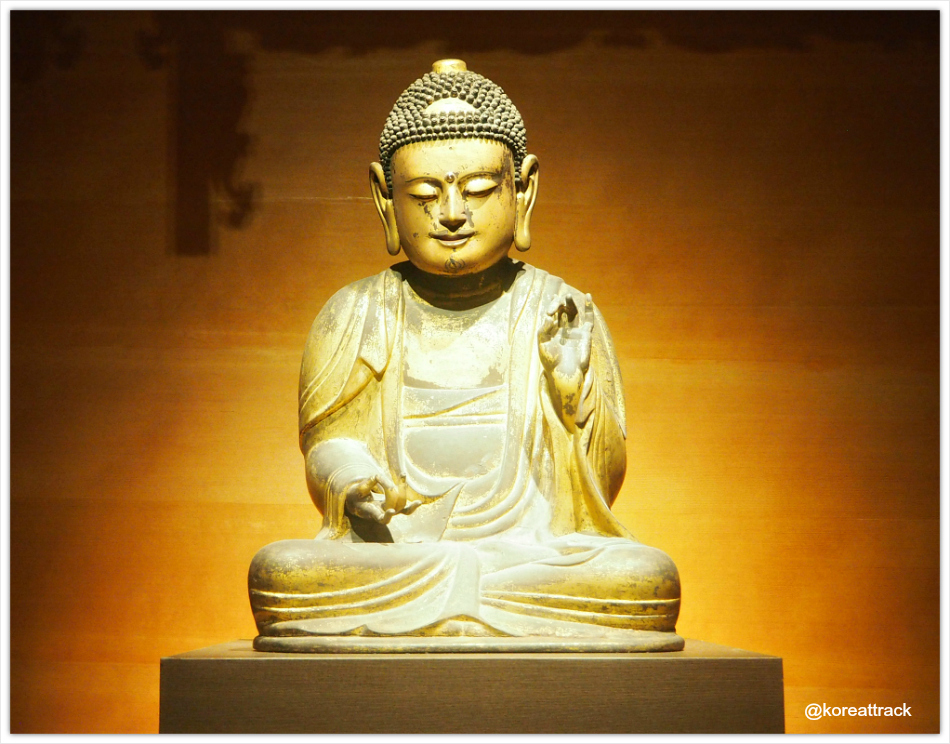
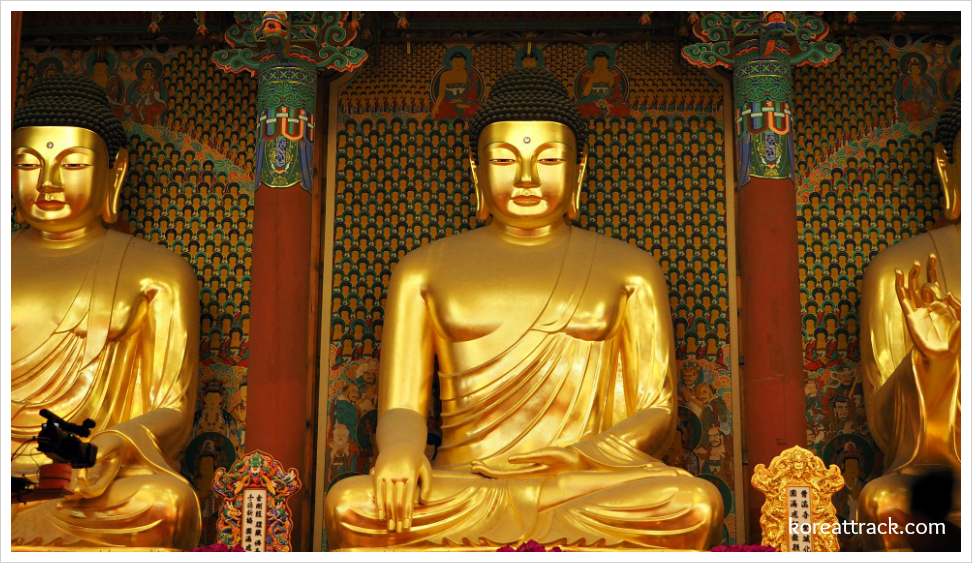
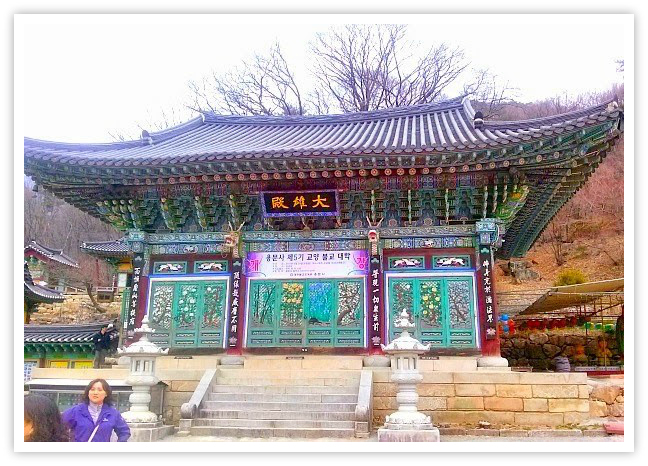




New! Comments
What do you think about this page? Leave me a comment in the box below.